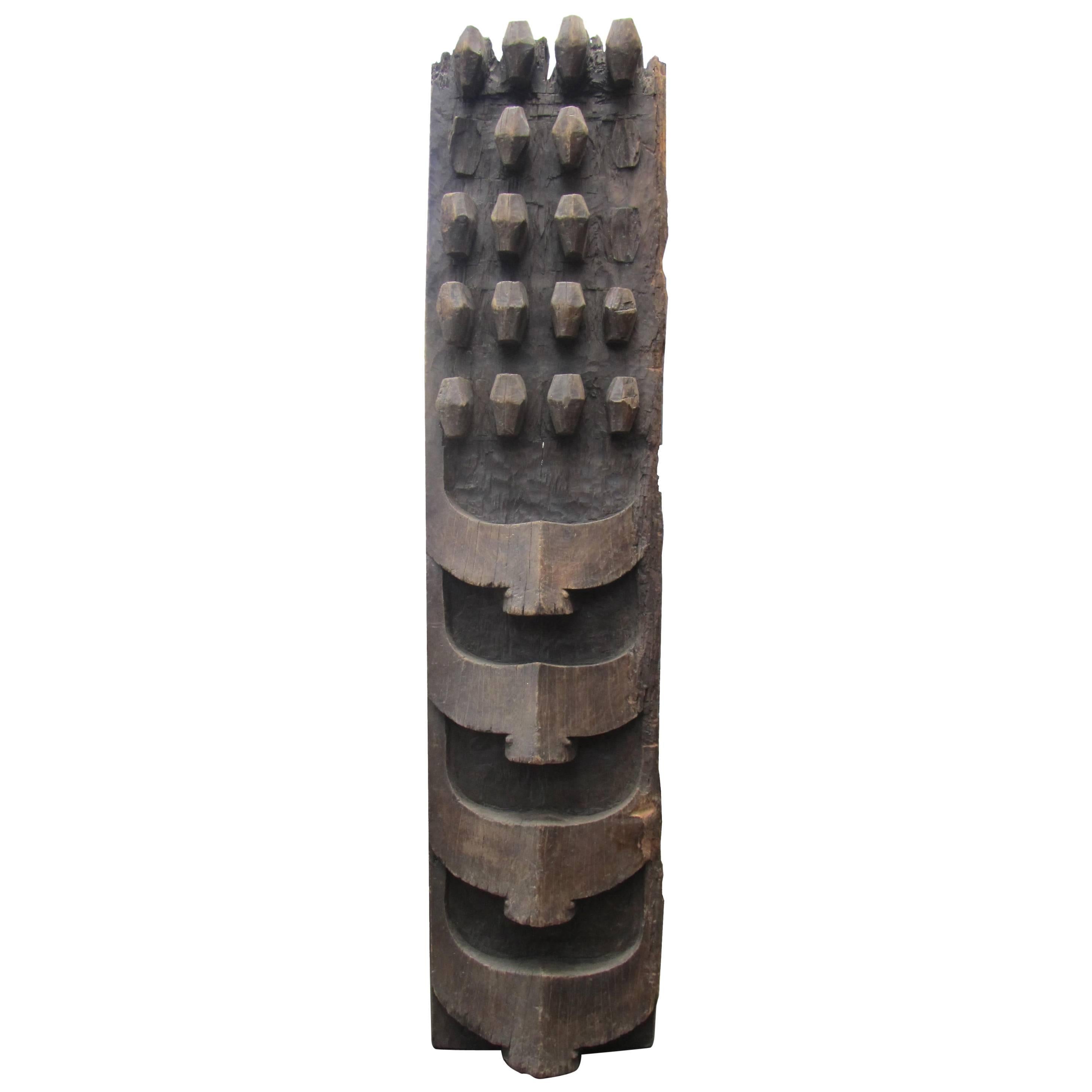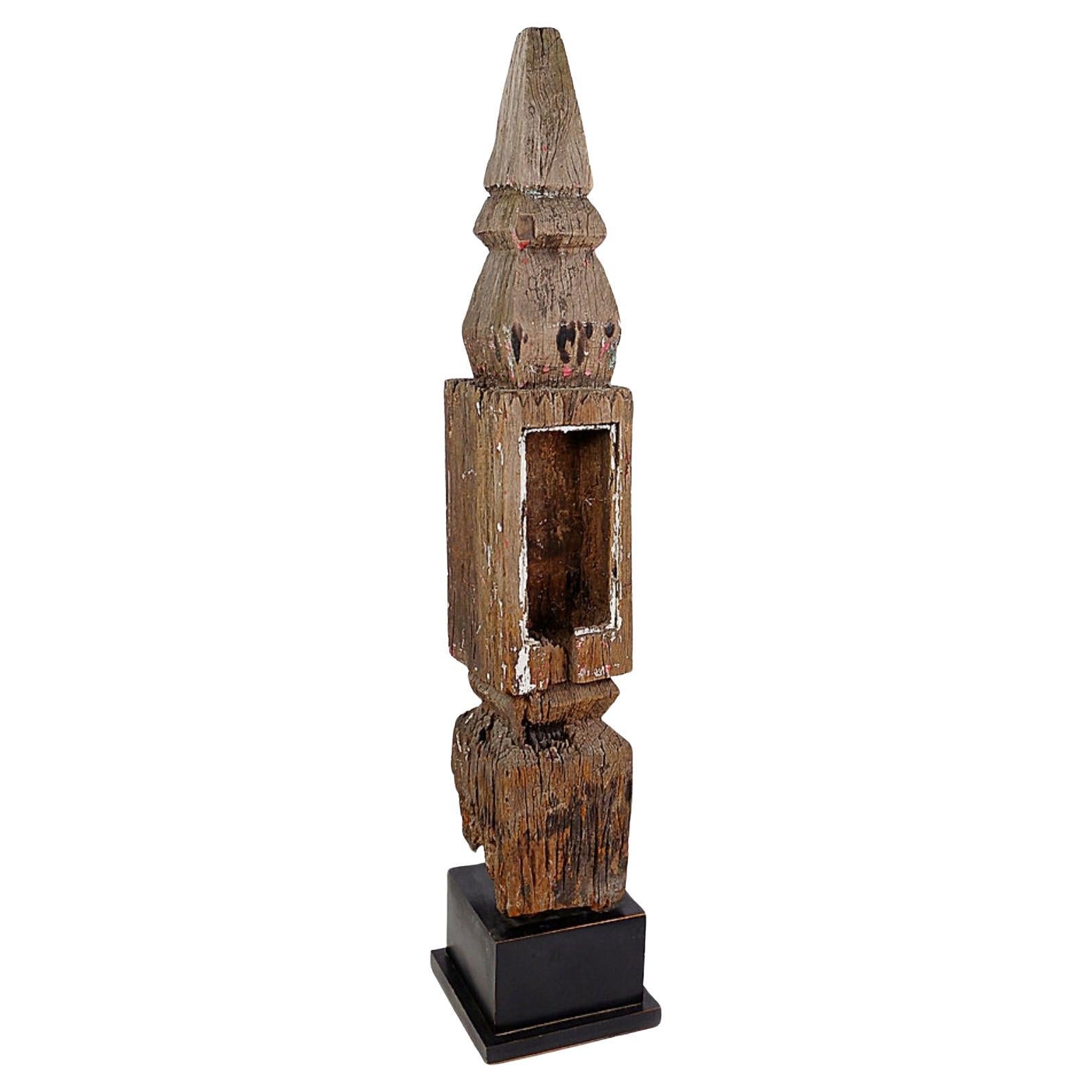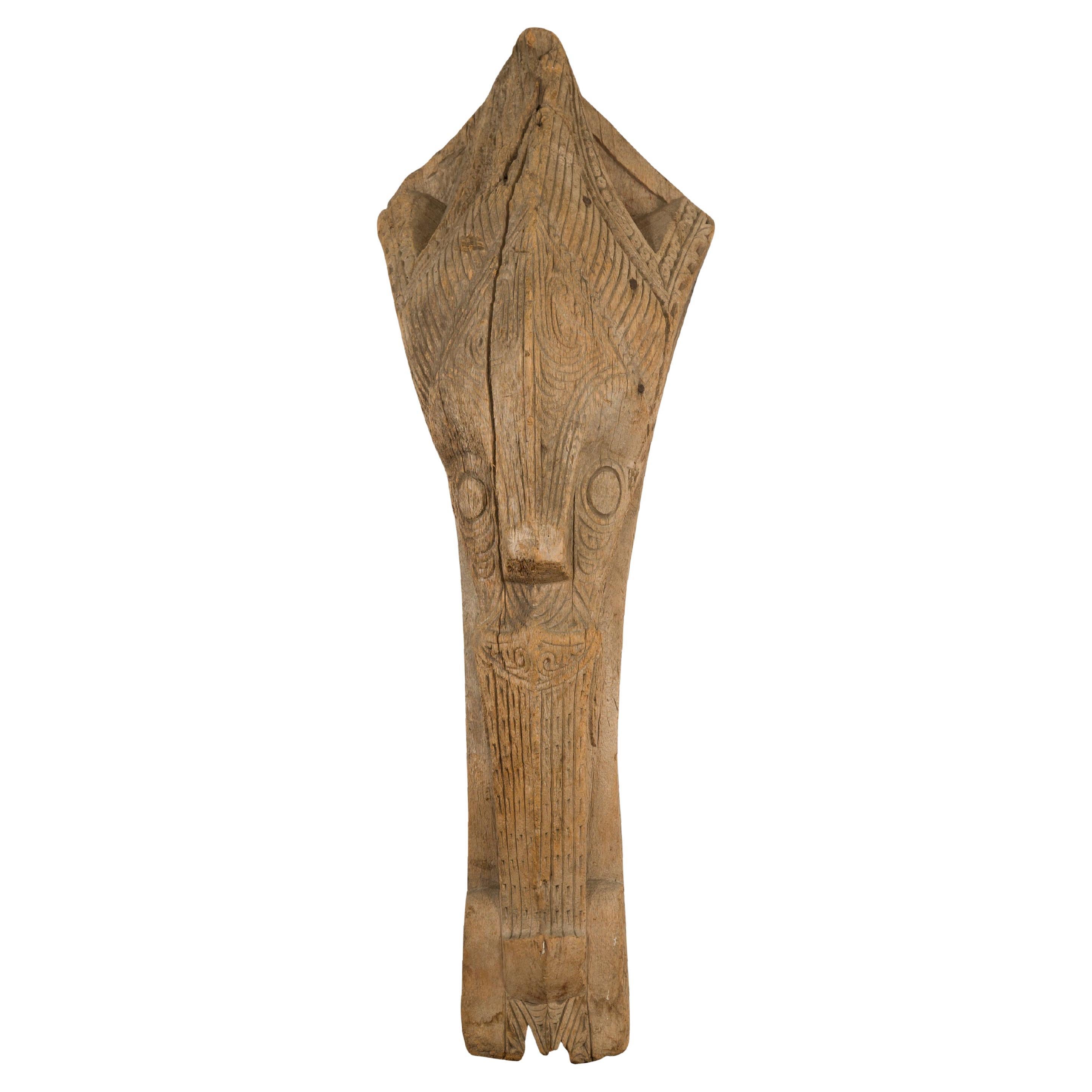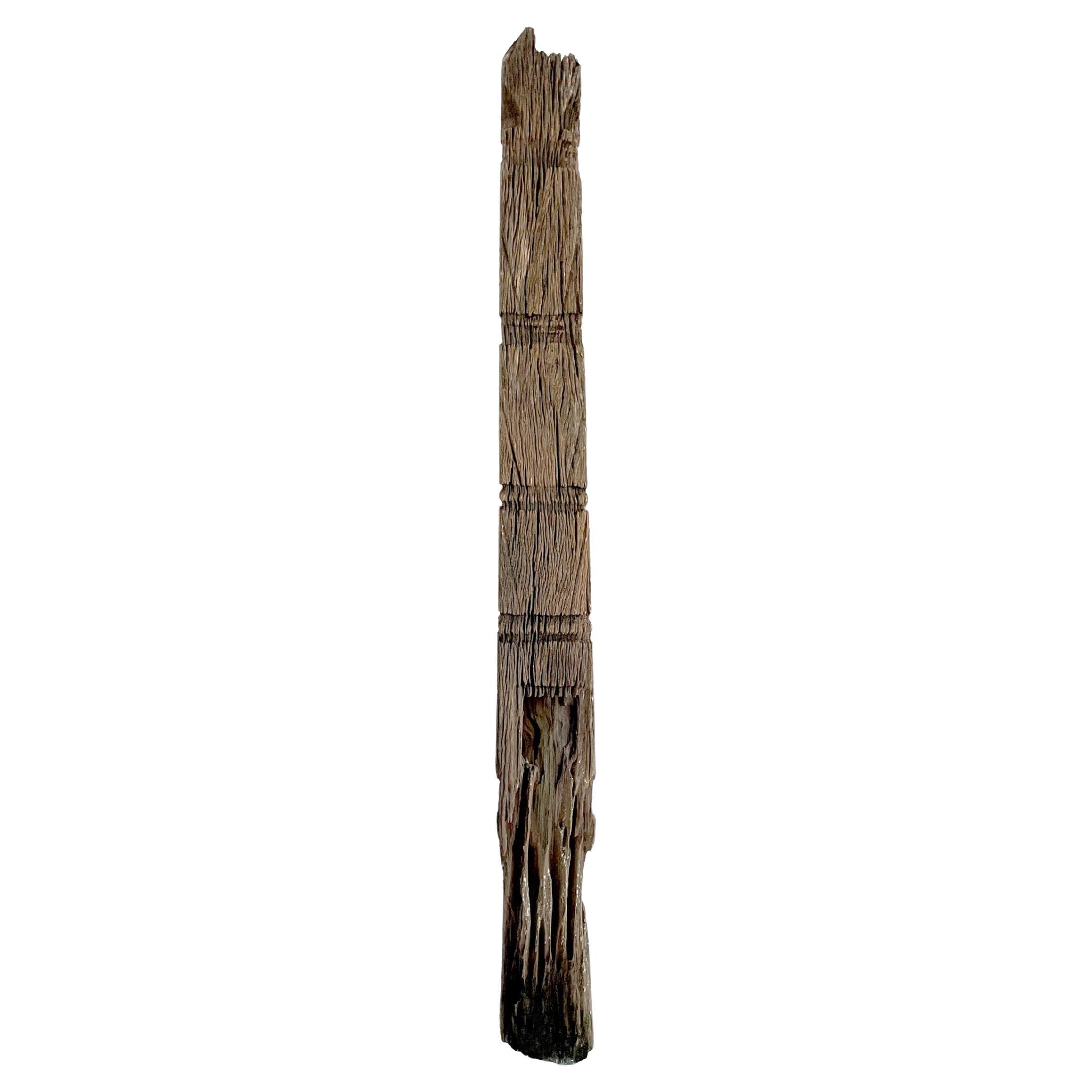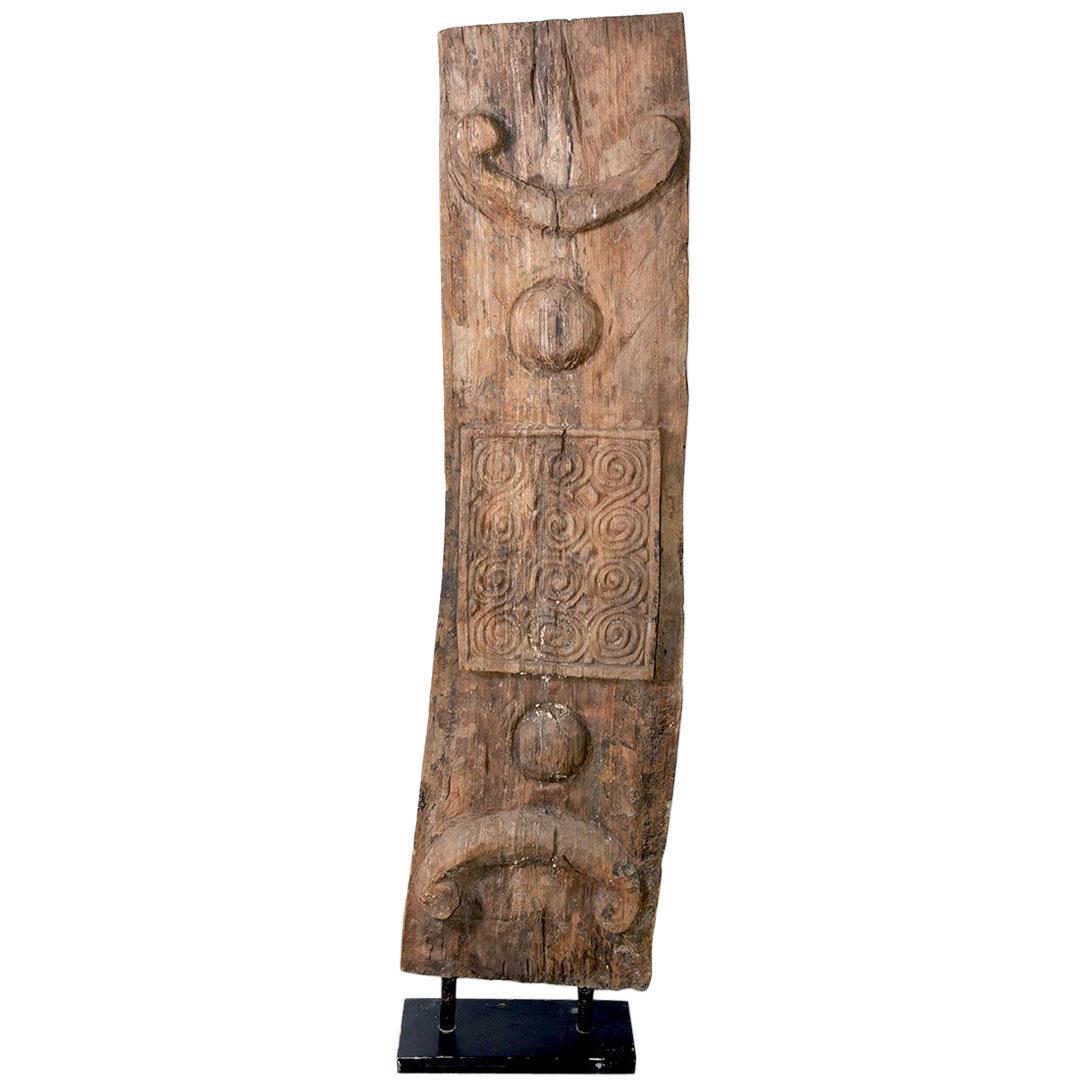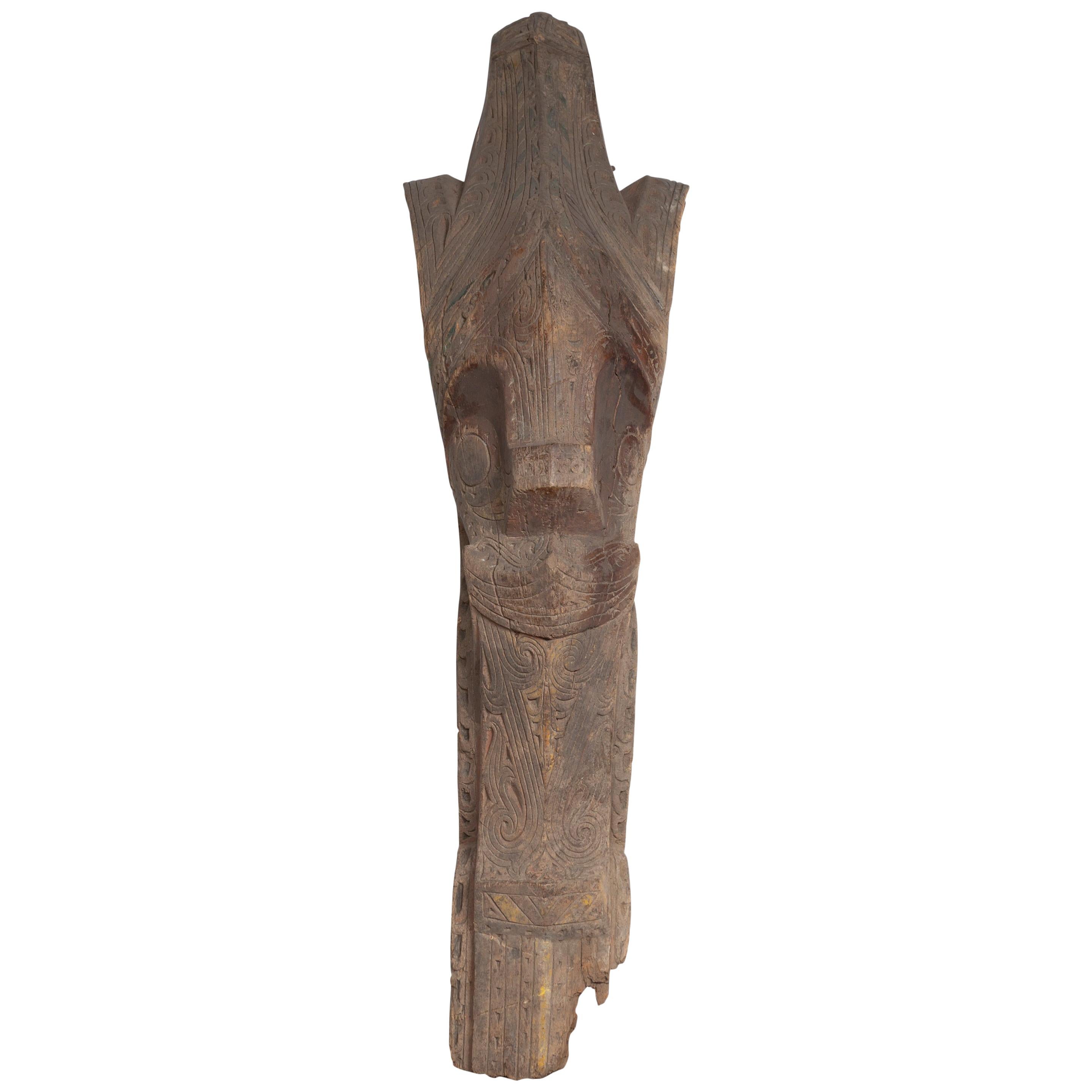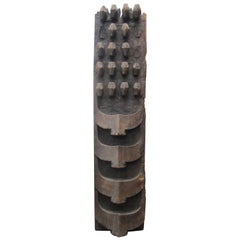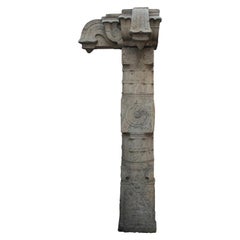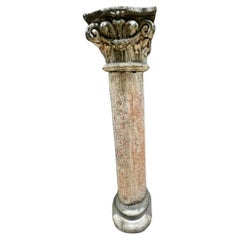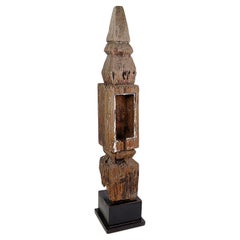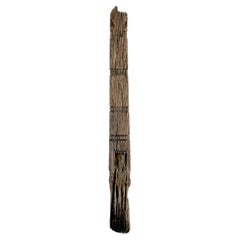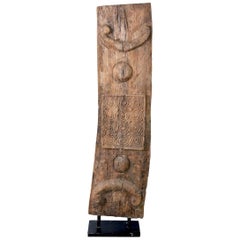Items Similar to Naga TOTEM, North-East India, 19th Century
Want more images or videos?
Request additional images or videos from the seller
1 of 3
Naga TOTEM, North-East India, 19th Century
$8,500
£6,449.60
€7,374.55
CA$11,872.20
A$13,200.27
CHF 6,892.45
MX$160,679.38
NOK 87,944.67
SEK 82,399.95
DKK 55,037.59
Shipping
Retrieving quote...The 1stDibs Promise:
Authenticity Guarantee,
Money-Back Guarantee,
24-Hour Cancellation
About the Item
Coming from the area of influence of the Naga people, this stunning piece is an extraordinary example of their cultural views. The Nagas are a conglomeration of different tribes native to the northeastern part of India and northwestern part of Myanmar. Although they speak over 89 different languages and dialects –mostly unintelligible with each other-, they share a similar culture and customs. They have a strong warrior tradition and are recognized as expert artisans.
Traditionally, totems have been associated with divine and magic powers attributed to a sacred animal which serves as protector of the tribe. Among the Nagas, these large panels, hewn from enormous logs of wood, were placed on village gates, ceremonial posts, house fronts, and morungs, that is, a particular Community hall, as they were intended to be seen immediately on entry. Carved symbols proclaimed social status and wealth, courage and skill at warfare, and were intended to inspire respect among peers and fear in enemies.
Representing Mithun, an endemic buffalo species appreciated for their milk and meat, the five pairs of horns on this TOTEM symbolize the relative prosperity and fertility of the tribe and their strength to resist other clan's attacks.
- Dimensions:Height: 90.56 in (230 cm)Width: 27.56 in (70 cm)Depth: 7.88 in (20 cm)
- Materials and Techniques:
- Place of Origin:
- Period:
- Date of Manufacture:19th Century
- Condition:
- Seller Location:Mexico City, MX
- Reference Number:1stDibs: LU3531310730063
About the Seller
5.0
Vetted Professional Seller
Every seller passes strict standards for authenticity and reliability
Established in 1968
1stDibs seller since 2018
8 sales on 1stDibs
Typical response time: A week
- ShippingRetrieving quote...Shipping from: Mexico City, Mexico
- Return Policy
Authenticity Guarantee
In the unlikely event there’s an issue with an item’s authenticity, contact us within 1 year for a full refund. DetailsMoney-Back Guarantee
If your item is not as described, is damaged in transit, or does not arrive, contact us within 7 days for a full refund. Details24-Hour Cancellation
You have a 24-hour grace period in which to reconsider your purchase, with no questions asked.Vetted Professional Sellers
Our world-class sellers must adhere to strict standards for service and quality, maintaining the integrity of our listings.Price-Match Guarantee
If you find that a seller listed the same item for a lower price elsewhere, we’ll match it.Trusted Global Delivery
Our best-in-class carrier network provides specialized shipping options worldwide, including custom delivery.More From This Seller
View AllNaga TOTEM, North-East India, 19th Century
Located in Mexico City, MX
Coming from the area of influence of the Naga people, this stunning monolitic piece is an extraordinary example of their cultural views. The Nagas are a conglomeration of different t...
Category
Antique 19th Century Southeast Asian Tribal Sculptures and Carvings
Materials
Wood
Monolithic Teak Wood columns
Located in Mexico City, MX
Monolithic Teak Wood columns, carved stone bases with an elegant typical Indian design. Upper shaft is ending in a classic geometrical square design from the moghul empire, The body...
Category
Antique 18th Century Indian Pedestals and Columns
Materials
Stone
$8,750 / set
Kerala, Madras, South of India, Engraved Granite Column, Mandala and Naga Design
Located in Mexico City, MX
This unique monolitic reddish granite columns come from religious houses to fantastic temples in the south of the Indian subcontinent. This specific piece, with a beautiful geometric...
Category
Antique 16th Century Indian Pedestals and Columns
Materials
Granite
Indo-Portuguese columns
Located in Mexico City, MX
Indo-Portuguese columns are a distinctive feature of the architectural heritage that emerged during the Portuguese colonization of India, primarily in regions like Goa, Kochi, Daman ...
Category
Antique Late 17th Century European Anglo-Indian Architectural Elements
Materials
Stone
$5,000 / set
Early 20th Century, Philippines, Cock Fighting Box
Located in Mexico City, MX
This rare piece used to keep the fighting cocks, traditional game that is still preserved in all East Asia and Mexico.
Category
Early 20th Century Indian Furniture
Materials
Wood
17th Century, Peruvian Huamanga Stone
Located in Mexico City, MX
It is a beautiful carved stone known as Huamanga stone, endemic of the Zone of Ayacucho, Viceroyalty of Peru. With a refined regional touch and loaded of pre-Columbian flavor as Chinese, It represents the Holy Family of Mary, Joseph and Jesus with God Father...
Category
Antique 17th Century Peruvian Sculptures and Carvings
Materials
Stone
You May Also Like
19th Century Thai Carved Wooden Stupa
Located in Linkebeek, BE
19th Century Thai Carved Wooden Stupa
Stupa - Sculpture - Decoration - Wood
Measures : Base: 30cmx30cm H:158cm
Material : Teak Hand-Carved
Category
Antique 19th Century Asian Sculptures and Carvings
Materials
Wood
Large Indonesian Hand Carved Batak Singa Singa Tribal Carving from Sumatra
Located in Yonkers, NY
An antique hand carved tribal 19th century sculpture from the Batak People, northern Sumatra, called a Singa Singa. Immerse yourself in the rich cultural heritage of the Batak People with this antique hand carved tribal 19th century sculpture from northern Sumatra, known as a Singa Singa. This work of art showcases the intricate craftsmanship and unique artistic traditions of the Batak People, making it a captivating addition to any collection.
Originating from the Batak People of northern Sumatra, this 19th century Singa Singa sculpture is a testament to the region's artistic prowess. Hand carved, the sculpture features a striking design that captures the essence of the mythical Singa Singa creature, a symbol of protection and strength in Batak culture.
Crafted from solid wood, this antique Singa Singa sculpture boasts a beautifully aged patina that highlights the carvings and adds a sense of depth and history to the piece. The masterful artistry and skillful execution of the design make it a captivating and rare example of Batak tribal art.
Display this magnificent 19th century Batak Singa...
Category
Antique 19th Century Indonesian Tribal Sculptures and Carvings
Materials
Wood
19th Century Thai Carved Wooden Stupa
Located in Atlanta, GA
A rare 19th century Thai carved wood stupa made from the heart wood of the Teak tree. This stupa is from Isan region of the Thailand (northern Thailan...
Category
Antique Late 19th Century Thai Sculptures and Carvings
Materials
Teak
Antique Carved Wood Sculpture
Located in Sheffield, MA
Exotic 19th century carved relief architectural wood element, once part of a building facade has now been mounted on metal stand and made into an exciting and impressive sculpture.
...
Category
Antique 19th Century Asian Sculptures and Carvings
Materials
Wood
Hand Carved Singa Singa Tribal Carving from the Batak People in Sumatra
Located in Yonkers, NY
A antique hand carved tribal carving from the Batak People, northern Sumatra, called a Singa Singa with traces of green and yellow polychromy and nicely weathered appearance. Attract...
Category
Early 20th Century Indonesian Tribal Sculptures and Carvings
Materials
Wood
Indian Midcentury Folk Art Shiva Trimurti Wood Sculpture
Located in New York, NY
Vintage Indian hardwood Shiva Trimurti sculpture is intricately hand carved with three sides of the face of Lord Shiva, one of the 3 major Gods of the Hindu...
Category
20th Century Indian Tribal Figurative Sculptures
Materials
Hardwood
$1,600 Sale Price
33% Off
